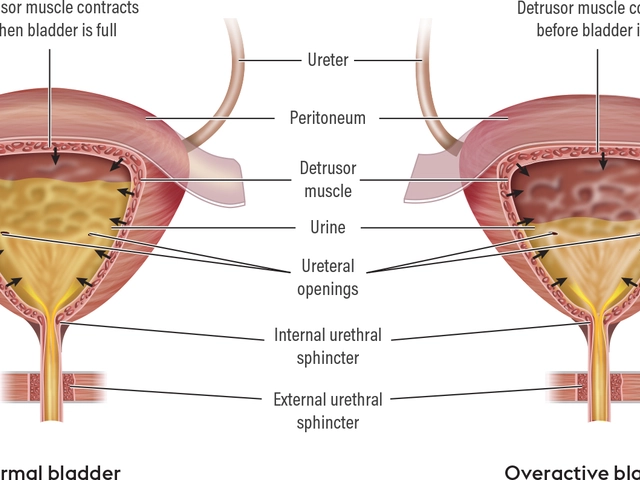
Biblical Leprosy Comparison Tool
This interactive tool compares the ancient Levitical approach to leprosy with the New Testament perspective through key aspects of the practice.
- Authority: Priests inspected and declared purity
- Isolation: Mandatory exclusion until declared clean
- Ritual Requirement: Two-bird offering, hyssop, water
- Social Stigma: High, based on impurity status
- Theological Focus: Ceremonial cleanliness
- Authority: Jesus (and subsequently apostles) performed direct healing
- Isolation: Immediate reintegration after healing
- Ritual Requirement: Symbolic reference to priestly rites, but not required
- Social Stigma: Reduced, as healed individuals become witnesses of faith
- Theological Focus: Holistic compassion and spiritual renewal
Interactive Insight
Select a comparison aspect to see how the two approaches differ:
Authority: In the Levitical system, priests inspected and declared purity. In the New Testament, Jesus (and subsequently apostles) performed direct healing.
Quick Summary
- Biblical leprosy (tzaraath) was seen as a sign of ritual impurity, not just a medical condition.
- Levitical law dictated isolation, cleansing rituals, and the role of priests in declaring purity.
- Social stigma led to segregation of sufferers, affecting family, economics, and community dynamics.
- Jesus’ healings in the New Testament challenged traditional views and opened new theological pathways.
- Understanding these ancient practices sheds light on modern attitudes toward disease and exclusion.
What Biblical Texts Say About Leprosy
When you open the Old Testament, the word Leprosy is a term that covers a range of skin diseases, often linked to ritual impurity rather than a specific medical diagnosis appears mostly in Leviticus. Chapter 13 outlines a detailed inspection process performed by priests to identify “tzaraath,” the Hebrew word traditionally translated as leprosy.
Leviticus 13:1‑46 reads like a medical handbook, describing spots, discoloration, hair loss, and even mildew on garments. The underlying purpose, however, is not to prescribe treatment but to determine a person’s ceremonial status.
Levitical Purity System and the Role of Priests
The priest (Kohen) acted as the community’s health inspector. After a visual examination, the priest would declare the individual "unclean" ("tamei") or "clean" ("tahor"). If declared unclean, the person faced mandatory isolation outside the camp for up to seven days, followed by a repeat inspection.
Only after two clean examinations could the individual re‑enter society, and even then a purification rite involving two birds, cedar wood, scarlet yarn, and hyssop was required (Leviticus 14). The ritual symbolized the removal of impurity and restoration of communal belonging.

Social Consequences of Being Declared Unclean
Being labeled "unclean" had immediate social fallout. Families lost a wage earner; landlords saw a drop in rent; and marketplaces shunned any goods touched by the afflicted. The Bible even instructs townspeople to warn outsiders: "Do not enter the house of a person who has the disease" (Leviticus 13:46).
Archaeological evidence from ancient Israelite settlements shows separate quarters for suspected leprosy cases, confirming the textual isolation mandate. This segregation created a distinct sub‑community that often developed its own support networks, mirroring modern disease‑based social groups.
Jesus and the New Testament Re‑Interpretation
The New Testament flips the script. In the Gospels, Jesus encounters several lepers and heals them without requiring the elaborate priestly rituals. In Mark 1:40‑45, a leper approaches Jesus, is healed, and immediately told to "show yourself to the priest and offer the gift that Moses commanded"-a nod to the old law but also an invitation to re‑integrate under the new covenant.
These healings carry theological weight. By restoring lepers instantly, Jesus demonstrates compassion that transcends ritual purity, emphasizing inner righteousness over external cleanliness. This shift sparked early Christian debates about whether the old purity codes still applied.
Comparing Old and New Approaches
| Aspect | Levitical System | New Testament View |
|---|---|---|
| Authority | Priests inspected and declared purity | Jesus (and subsequently apostles) performed direct healing |
| Isolation | Mandatory exclusion until declared clean | Immediate reintegration after healing |
| Ritual Requirement | Two‑bird offering, hyssop, water | Symbolic reference to priestly rites, but not required for restoration |
| Social Stigma | High, based on impurity status | Reduced, as healed individuals become witnesses of faith |
| Theological Focus | Ceremonial cleanliness | Holistic compassion and spiritual renewal |

Long‑Term Cultural Legacy
Centuries after the biblical era, the image of leprosy remained a powerful metaphor for sin, alienation, and redemption in Western art and literature. Think of Dante’s “lepers” in the ninth circle of Hell or the phrase "to leper" meaning to shun someone.
Modern medical science identifies leprosy as caused by Mycobacterium leprae, a bacterium treatable with multidrug therapy. However, the ancient stigma persists in some societies, where recovered patients still face discrimination.
Studying the biblical narrative helps health practitioners understand how religious framing can amplify or alleviate disease stigma. Programs that engage faith leaders in education have shown success in reducing exclusionary practices in regions where leprosy remains endemic.
Key Takeaways for Today's Readers
- Biblical leprosy was as much a social label as a medical condition.
- Levitical law enforced isolation, creating lasting community trauma.
- Jesus’ healings signaled a theological pivot toward compassion over ritual purity.
- Modern stigma often mirrors ancient patterns; faith‑based outreach can break the cycle.
Frequently Asked Questions
What does the term “tzaraath” actually refer to?
“Tzaraath” is a Hebrew word encompassing various skin conditions, mold on clothing, and even mildew on houses. Scholars agree it is broader than modern leprosy, serving primarily as a marker of ritual impurity.
Why were priests responsible for diagnosing leprosy?
Priests acted as both religious officials and health inspectors because cleanliness was tied to covenantal holiness. Their authority ensured that impurity did not contaminate communal worship.
How did Jesus’ approach to lepers differ from the Mosaic law?
Jesus healed lepers on the spot, allowing them to re‑enter society immediately. While he still told them to present themselves to the priest (honoring the law), the emphasis shifted from ritual purity to compassion and faith.
Does the biblical view of leprosy influence modern attitudes?
Yes, the legacy of leprosy as a symbol of sin and exclusion still informs cultural narratives. In some regions, religious misconceptions fuel stigma, making community‑based education crucial.
What are effective ways to reduce leprosy stigma today?
Engaging local faith leaders, providing accurate medical information, and showcasing stories of cured individuals help dismantle fear. Programs that combine treatment with social reintegration have proven results.
10 Comments
Write a comment
More Articles

The Importance of Hydration in Overactive Bladder Management
As a blogger, I cannot stress enough the importance of hydration in managing an overactive bladder. Drinking adequate water helps maintain a healthy urinary system and prevents the concentration of urine, which can irritate the bladder. Staying hydrated can also help reduce the frequency of bathroom trips and minimize the risk of urinary tract infections. While it may seem counterintuitive, avoiding water can actually make the symptoms of an overactive bladder worse. So, don't forget to drink enough water daily and keep your bladder happy and healthy!

Phenytoin and Sleep: How This Epilepsy Drug Can Disrupt Your Nights (and What to Do)
Waking at 3 a.m. since starting phenytoin? Learn how phenytoin affects sleep, how common it is, what to watch for, and practical fixes you can use today.

The connection between stress and vaginal infections
In my recent research, I've uncovered a fascinating link between stress levels and vaginal infections. It appears that high stress levels can disrupt our body's hormonal balance, which in turn can lead to a weakened immune system. This leaves us more susceptible to infections, including those in the vaginal area. Hence, managing stress becomes crucial not just for our mental health, but for our physical health as well. It's a clear reminder that our bodies are interconnected systems, and we need to take care of all aspects to maintain overall wellbeing.

Jonny Arruda
October 6, 2025 AT 00:33The shift from ritual isolation to immediate reintegration really shows how compassion can rewrite social rules.